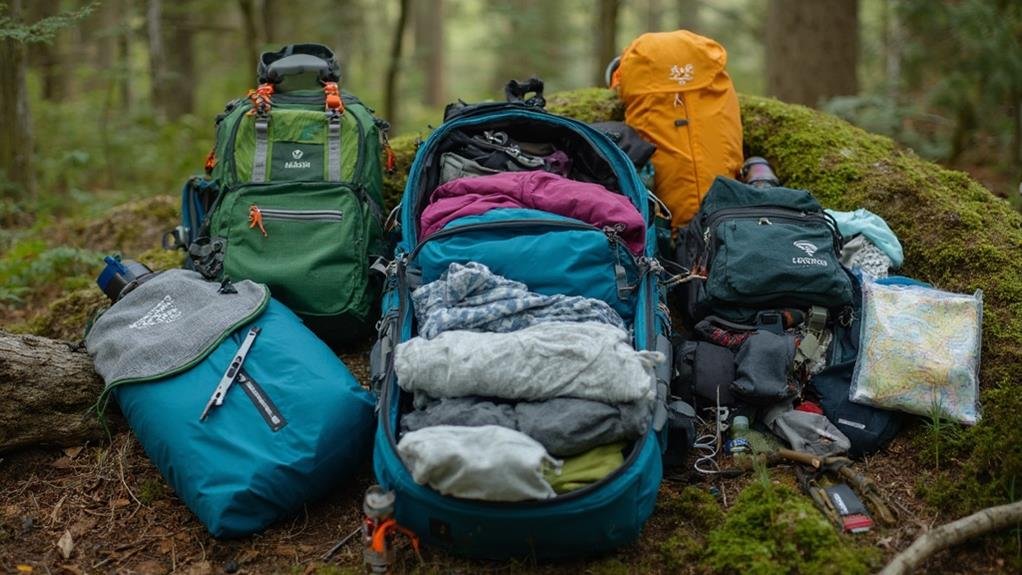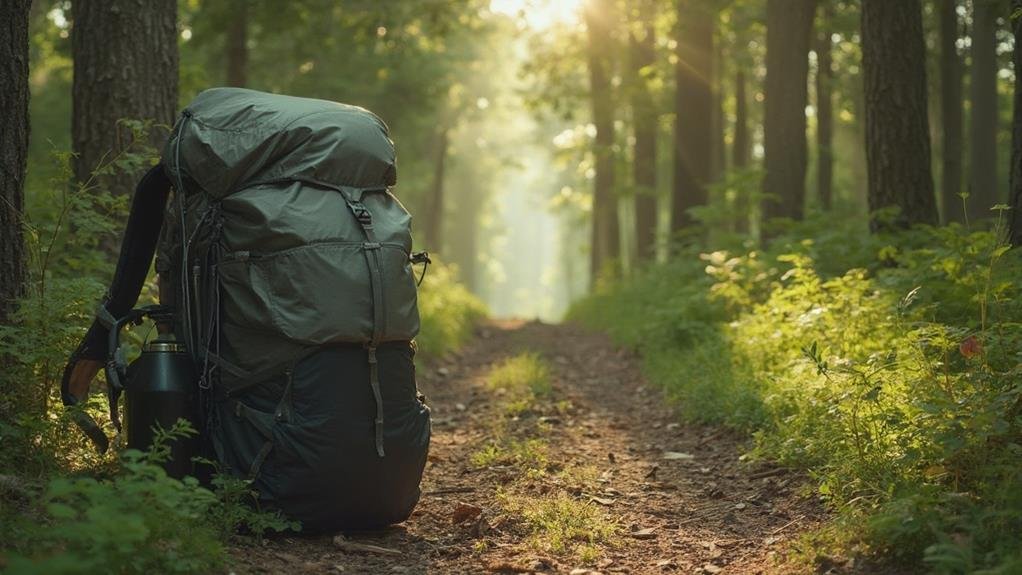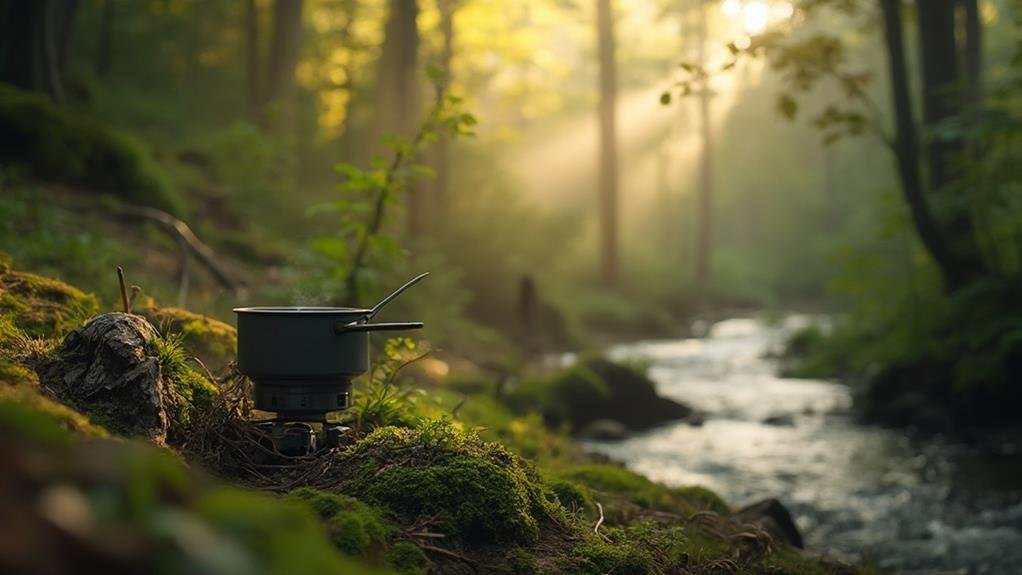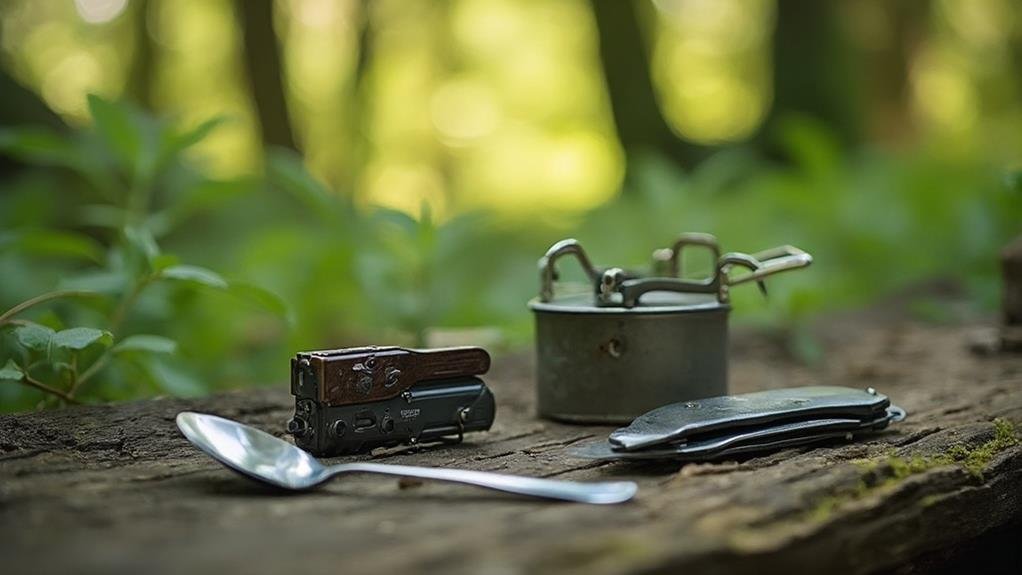

Starting on a backpacking trip can feel like dancing with the wilderness, but it's vital to have the right gear to keep your steps light. You'll find that opting for a freestanding tent, an ultra-light sleeping bag, and compact cooking equipment can transform your journey into a more manageable adventure. Streamlining your packing with minimalist clothing and multifunctional tools is key to conquering the trails efficiently. But how do you choose the right gear without sacrificing comfort and safety? Let's explore the essentials that can make all the difference in your outdoor experience.

When planning a backpacking trip, choosing the right tent is essential for minimizing weight without sacrificing comfort. You want a tent that's light enough to carry, yet sturdy enough to protect you from the elements.
Freestanding tents are a great choice because they're easy to set up and can stand on their own without stakes, making them perfect for rocky or hard-packed ground. These tents are versatile and often lighter, which is a big plus when every ounce counts on your journey.
Consider a three season tent for most backpacking adventures. These tents are designed to handle spring, summer, and fall conditions, offering a balance of ventilation, durability, and weather protection.
They provide ample airflow to keep you cool on warm nights, yet are robust enough to shield you from unexpected rain showers. From my experience, investing in a high-quality tent makes a significant difference in your comfort and safety during a trip.
Selecting the right tent sets the foundation for a comfortable backpacking trip, but pairing it with an ultra-light sleeping bag guarantees you rest well while keeping your pack light. When you're miles from home, a good night's sleep can make all the difference. Choosing the right sleeping bag involves considering sleeping bag materials and temperature ratings, which are vital for both comfort and weight.
First, let's talk about materials. You'll find that bags made with down are incredibly light and compressible, perfect for saving space.
Synthetic materials, on the other hand, may weigh a bit more but offer reliable warmth even when wet.
Now, onto temperature ratings. Pay close attention to this, as it tells you the lowest temperature at which the bag will keep you warm. If you're hiking in cooler climates, a bag with a lower temperature rating is necessary.
I've learned from experience that investing in an ultra-light sleeping bag is worth it. Your back will thank you as you climb those steep trails without extra weight.

Cooking on the trail doesn't have to be a burden with the right compact cooking equipment. When you're backpacking, every ounce counts, so choosing the best gear is vital.
Let's explore some essentials that'll make your outdoor culinary experience as light and convenient as possible.
First, consider your stove options. A lightweight backpacking stove can fit in the palm of your hand and uses small fuel canisters. They're perfect for boiling water quickly for meals and drinks. Look for models that are easy to ignite and have adjustable flame controls.
Next, think about your cooking utensils. You don't need to bring a full kitchen; just a few multi-purpose tools will do the trick. Aim for items that are foldable or have nesting features to save space. A spork, a collapsible pot, and a compact cutting board are ideal.
Lastly, here's a simple list to guide you:
With the right compact cooking gear, you'll enjoy delicious meals without the hassle.
Comfort and efficiency are key when packing clothing for a backpacking trip. You want to stay warm, dry, and comfortable, without lugging around a heavy pack. That's where minimalist clothing choices come in.
Start by embracing layering techniques. Layering lets you adjust to different temperatures throughout the day by adding or removing clothes. A base layer that manages moisture is essential. It keeps sweat off your skin, so you stay dry and warm. Look for materials like merino wool or synthetic fabrics designed for moisture management.
Next, consider your mid-layer. This is about insulation, keeping you warm when the temperature drops. Lightweight fleece or down jackets are excellent choices because they pack down small but provide plenty of warmth.
For the outer layer, choose a waterproof and windproof shell. It protects you from rain and wind, ensuring your inner layers work effectively.
When picking clothing, think about versatility. Neutral colors and simple styles can be worn in various situations. Also, bring pieces that can serve multiple purposes, like pants that convert into shorts.
With the right clothing, you'll be ready for any adventure, feeling confident and comfortable.

When it comes to backpacking, your gear's versatility can make a world of difference. Multifunctional tools are your best friends on the trail, helping you pack light while staying prepared.
Imagine having a single tool that can open cans, cut rope, and even help fix your gear. Multi tool options are plentiful, so choose one that suits your needs. It's amazing how one small gadget can save so much space and weight in your backpack.
Staying hydrated is essential, but carrying loads of water isn't practical. That's where portable water purifiers come in. They're compact, easy to use, and can turn almost any water source into safe drinking water.
No more lugging heavy bottles around when you have a purifier that fits right in your pocket.
Here's a quick list of important multifunctional backpacking tools you should consider:
With the right tools, you'll be ready for anything the trail throws your way, making your adventure more enjoyable and less burdensome.
Sign up for our newsletter to receive the latest gear reviews, tips, and exclusive offers. Stay informed and inspired for your next outdoor adventure!